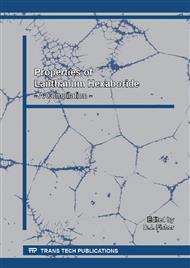p.9
p.19
p.27
p.37
p.43
p.55
p.71
p.79
p.85
Numerical Investigation of the Effect of Sprue Base Design on the Flow Pattern of Aluminum Gravity Casting
Abstract:
Effects of sprue base size and design on flow pattern during aluminum gravity casting have been investigated by employing different sprue base sizes and using computational fluid dynamics (CFD). Calculations was carried out using SUTCAST simulation software based on solving Navier-Stokes equation and tracing the free surface using SOLA-VOF algorithm. Flow pattern was analyzed with focusing on streamlines and velocity distribution in sprue base, runner and in-gate. Increasing well size was produced a vortex flow at the bottom of sprue base which increased the urface velocity of liquid metal in runner. Using a rather big sprue well could eliminate vena contracta, but in-gate velocity was observed independent from well size. It assumes that in-gate velocity may be more influenced by other casting considerations. Using a curved sprue base could remove vortex flow at the bottom of sprue while keeping a nearly full contact between liquid metal and runner wall.
Info:
Periodical:
Pages:
43-53
Citation:
Online since:
October 2013
Price:
Сopyright:
© 2013 Trans Tech Publications Ltd. All Rights Reserved
Share:
Citation:


